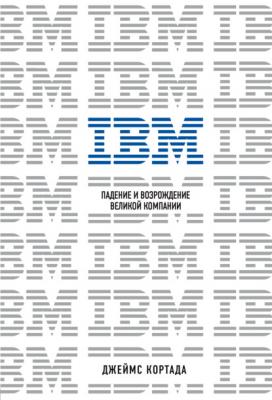1
Известно также, что IBM поставляла свои машины и технологии по обработке данных гитлеровскому режиму. В частности, речь шла о документообороте в нацистских лагерях смерти, где данные об узниках заносились на перфокарты от IBM. Это происходило прежде всего через немецкое подразделение компании, Deutsche Hollerith Maschinen Gesellschaft. Журналист-расследователь Эдвин Блэк в книге IBM and the Holocaust показывает, как сделки IBM с нацистским режимом проводились через штаб-квартиру корпорации в Нью-Йорке и через ее польский филиал. – Здесь и далее прим. ред.
2
Alex Planes, «Should the Dow Jones Get Rid of International Business Machines Corp?», The Motley Fool, July 16, 2014, http://www.fool.com/investing/general/2014/07/16/should-the-dow-jones-get-rid-of-international-busi.aspx.
3
Речь идет о запуске в апреле 1964 года революционного компьютера System/360 – машины, которая, вопреки мнению маркетологов, впервые применяла программы и периферийное оборудование, которые могли быть использованы не для решения одной конкретной задачи, как раньше, а для решения разных задач.
4
Harold Evans, Do I Make Myself Clear? (New York: Little, Brown, 2017), 212.
5
Robert J. Gordon, The Rise and Fall of American Growth: The U.S. Standard of Living since the Civil War (Princeton, NJ: Princeton University Press, 2016), 570–571.
6
Mairi Maclean, Charles Harvey, and Stewart R. Clegg, «Organization Theory in Business and Management History: Present Status and Future Prospects», Business History Review 91, no. 3 (Autumn 2017): 457–481.
7
Geoffrey D. Austrian, Herman Hollerith: Forgotten Giant of Information Processing (New York: Columbia University Press, 1982); Lars Heide, Punched-Card Systems and the Early Information Explosion, 1880–1945 (Baltimore: Johns Hopkins University Press, 2009). Хейде четко подытожил основные аспекты этой позиции в Lars Heide, «Shaping a Technology: American Punched Card Systems 1880–1914», IEEE Annals of the History of Computing 19, no. 4 (October—December 1997): 28–41. См. также Friedrich W. Kistermann, «Hollerith Punched Card System Development (1905–1913)», IEEE Annals of the History of Computing 27, no. 1 (January—March 2005): 56–66. Холлерит продолжал изобретать и взаимодействовать с фирмой до самой своей смерти в 1929 году.
8
Austrian, Herman Hollerith, 337–339; Robert Sobel, IBM: Colossus in Transition (New York: Times Books, 1982); Emerson W. Pugh, Building IBM: Shaping an Industry and Its Technology (Cambridge, MA: MIT Press, 1995); Rowena Olegario, «IBM and the Two Thomas J. Watsons», в Creating Modern Capitalism: How Entrepreneurs, Companies, and Countries Triumphed in Three Industrial Revolutions, ed. Thomas K. McCraw (Cambridge, MA: Harvard University Press, 1995), 349–395; Kevin Maney, The Maverick and His Machine: Thomas Watson, Sr. and the Making of IBM (Hoboken, NJ: John Wiley and Sons, 2003.
9
Намеки на более серьезное взаимодействие можно найти в мемуарах первых сотрудников, особенно Чарльза Р. Флинта: Charles R. Flint, Memories of an Active Life: Men, and Ships, and Sealing Wax (New York: G. P. Putnam’s Sons, 1923); Frederick Lincoln Fuller, My Half Century as an Inventor (напечатано по частному заказу, 1938); Walter D. Jones, «Watson and Me: Life at IBM», IEEE Annals of the History of Computing 24, no. 1 (January—March 2002): 4–18.
10
Чрезвычайно убедительно описано в Alfred D. Chandler Jr., The Visible Hand: The Managerial Revolution in American Business (Cambridge, MA: Harvard University Press, 1977), 377–417.
11
Альфред Д. Чандлер (1918–2007), выдающийся американский историк бизнеса, профессор Гарвардской школы бизнеса, впервые в рамках исторического анализа исследовал генезис фирмы через соотношение внешнего окружения, стратегии развития и организационной структуры управления.
12
Gordon, The Rise and Fall of American Growth, 1–18.
13
U.S. Bureau of the Census, Historical Statistics of the United States: Colonial Times to 1970 (Washington,
